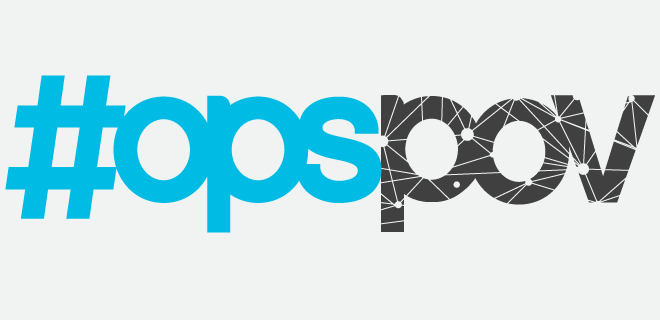
“If you had asked me 10 years ago if millions of people would pay $10 a month for their music, I’d have said that’s a suspect proposition,” comments Dan Rua, CEO of Admiral. “But over time user expectations, platforms and many other things have changed so now it’s a very normal thing for people to subscribe to stream music.”
Rua’s a good person to make this statement considering he was heavily involved on the investment side with late, great music streaming platform GrooveShark, as well as the former COO. As that site closed up shop, the core engineering team decided to stick together to battle the looming menace in media monetization: ad blocking.
Admiral, which left stealth in June after a round of seed funding, wants to offer publishers flexibility in combating the nuisance: a multi-tiered approach that includes not just a subscription model, but the opportunity to buy an ad-free pass to a bundle of sites.
With a few rare exceptions, conventional wisdom has long held that Internet users simply will not pay cash for digital content. After years of “free” content, the unwillingness to open their purses is deeply ingrained into their psyches.
But for years similar observations were made about digital music streaming as well as video. At some point enough factors in the landscape—including price point and ease of access—made subscribing to services (with or without advertising) palatable to millions.
So can other digital content reach that point? Rua thinks the answer is intertwined with the industry’s response to ad blocking.
Solutions Available
As 2016 rolled in, ad blocking seemed to be digital media crisis number one; as the year cycles to a close, the hyperventilating has subsided for several reasons. First, there are signs that ad blocking adoption has plateaued, and mobile ad blocking in the US is lower than the initial estimates. Premium publishers deserve some credit here for re-evaluating their ad experiences, deleting seemingly gratuitous placements, and cutting out overly invasive units.
Second, advertisers and agencies have told us that just like header bidding, they’re not feeling the effect of ad blocking on their campaigns. Too much ad blocking is not a common (or even heard-of) excuse for under-delivery.
Finally, numerous service providers like Admiral and Sourcepoint have emerged to provide publishers with a laundry list of ways to combat ad blocking, including measurement, user engagement, reinsertion, and cash transactions.
Following the IAB’s pretty ingenious DEAL guidelines, the first step to addressing ad blockers is measuring what percentage of traffic is coming to your site with blockers on. Many AdMonsters publishers I spoke to found that percentage was small—somewhere between 10%-15%. (The last numbers I saw for AdMonsters.com had us at about 8%—not too shameful for a site dedicated to ad tech). For a good deal of this group, that’s just not high enough to warrant the next step: blocker engagement.
At the same time, Forbes’ experiment engaging ad blockers encouraged around 42% to turn them off or whitelist the site in exchange for an “ad light” experience. While that percentage may not encourage you to pump your fist in the air, the more intriguing figure was that the recovered users tended to be highly engaged audiences that rooted through page after page. Forbes estimated it gained back millions of lost impressions and a fair deal of forsaken revenue.
Forbes and KBB (who presented at our October Tech Forum in Los Angeles) built out tools to ask blockers to whitelist and then deliver an ad-lite experience. Not every pub has the developer resources at their fingertips to make that happen, which is where a handy-dandy service provider comes in.
Multi-Pronged Approach
Admiral initially offers measurement, but beyond that has three other modules: Engage, Recover, and Transact. Engage enables a large custom message from the publisher and features a soft mode (“Would you mind turning off your ad blocker? No? OK, well, maybe next time then!”), a hard mode (“Whitelist our site or you get nothing”) and the gated mode.
In gated mode, a publisher can plea for the user to turn off the ad blocker or whitelist the site, but if the answer is no, the user will still be allowed to enjoy content. Admiral “recovers” lost revenue by re-inserting LEAN-style ads.
Rua is quick to differentiate this re-insertion scheme from others because it’s a “permission-based” path. Other companies simply serve ads over the blocker without informing the user or asking them to whitelist/turn off their ad blocker. Not only does this lead to user ire, it also opens the door to advertiser discontent: over the summer GroupM threatened a ban on re-inserting creative from the agency.
This gets into other gray areas—technically, Facebook is ignoring ad blocker calls and re-inserting on its platforms because it serves from its CMS. So does that mean GroupM won’t work with them? Also I’ve overheard recent publisher whispers that ad servers (one in particular) were registering re-inserted ads as invalid traffic. A source suggested that Google, lord of DFP and DFA, is aware of the issue but hasn’t made any progress in rectifying it over the last few months.
Which leads to “Transact”: Admiral enables a payment system to set up subscription offers as well as microtransactions. Yes, “impulse buyers” can pay a small fee to enjoy a piece of content and keep their precious ad blockers on.
While I’ve long been a proponent of microtransaction technology, Rua is more excited about the potential for subscription bundles.
“It’s tough for people to pull out their credit card for a single site,” he explains. “But if you have an offering with 10 great tech or sports or entertainment sites, now you have a value proposition for a subscription.”
It’s early days for subscription bundles, but it’s certainly an intriguing proposition to satisfy users fed up with digital ads and regain revenue for publishers. It’s definitely a trend to keep an eye on in 2017.